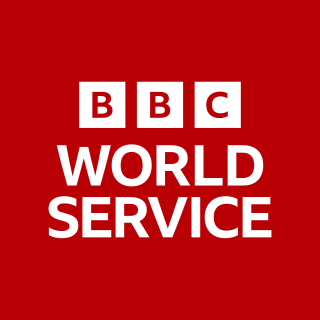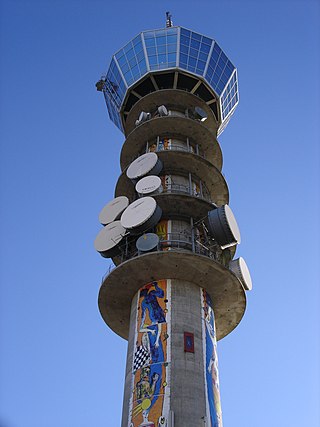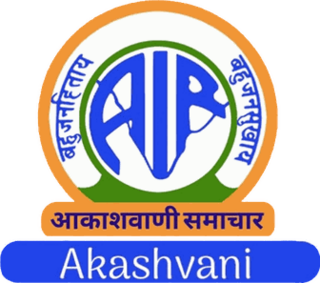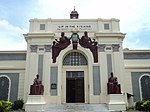Related Research Articles

BBC Radio 1 is a British national radio station owned and operated by the BBC. It specialises in modern popular music and current chart hits throughout the day. The station provides alternative genres at night, including electronica, dance, hip hop and indie, while its sister station 1Xtra plays black contemporary music, including hip hop and R&B. Radio 1 also runs two online streams, Radio 1 Dance, dedicated to dance music, and Radio 1 Anthems, dedicated to throwback music; both are available to listen only on BBC Sounds.
Talk radio is a radio format containing discussion about topical issues and consisting entirely or almost entirely of original spoken word content rather than outside music. They may feature monologues, dialogues between the hosts, interviews with guests, and/or listener participation which may be live conversations between the host and listeners who "call in" or via voice mail. Listener contributions are usually screened by a show's producers to maximize audience interest and, in the case of commercial talk radio, to attract advertisers.

The BBC World Service is an international broadcaster owned and operated by the BBC. It is the world's largest external broadcaster in terms of reception area, language selection and audience reach. It broadcasts radio news, speech and discussions in more than 40 languages to many parts of the world on analogue and digital shortwave platforms, internet streaming, podcasting, satellite, DAB, FM, LW and MW relays. In 2024, the World Service reached an average of 450 million people a week. In November 2016, the BBC announced that it would start broadcasting in additional languages including Amharic and Igbo, in its biggest expansion since the 1940s.

BBC Radio 4 is a British national radio station owned and operated by the BBC. The station replaced the BBC Home Service on 30 September 1967 and broadcasts a wide variety of spoken-word programmes from the BBC's headquarters at Broadcasting House, London. Since 2019, the station controller has been Mohit Bakaya. He replaced Gwyneth Williams, who had been the station controller since 2010.

AM broadcasting is radio broadcasting using amplitude modulation (AM) transmissions. It was the first method developed for making audio radio transmissions, and is still used worldwide, primarily for medium wave transmissions, but also on the longwave and shortwave radio bands.

Radio broadcasting is the broadcasting of audio (sound), sometimes with related metadata, by radio waves to radio receivers belonging to a public audience. In terrestrial radio broadcasting the radio waves are broadcast by a land-based radio station, while in satellite radio the radio waves are broadcast by a satellite in Earth orbit. To receive the content the listener must have a broadcast radio receiver (radio). Stations are often affiliated with a radio network that provides content in a common radio format, either in broadcast syndication or simulcast, or both. The encoding of a radio broadcast depends on whether it uses an analog or digital signal. Analog radio broadcasts use one of two types of radio wave modulation: amplitude modulation for AM radio, or frequency modulation for FM radio. Newer, digital radio stations transmit in several different digital audio standards, such as DAB, HD radio, or DRM.
Public broadcasting involves radio, television, and other electronic media outlets whose primary mission is public service. Public broadcasters receive funding from diverse sources including license fees, individual contributions, public financing, and commercial financing, and claim to avoid both political interference and commercial influence.

Low-power broadcasting is broadcasting by a broadcast station at a low transmitter power output to a smaller service area than "full power" stations within the same region. It is often distinguished from "micropower broadcasting" and broadcast translators. LPAM, LPFM and LPTV are in various levels of use across the world, varying widely based on the laws and their enforcement.

NOAA Weather Radio (NWR), also known as NOAA Weather Radio All Hazards, is an automated 24-hour network of VHF FM weather radio stations in the United States which broadcast weather information directly from a nearby National Weather Service office. It’s routine programming cycle includes local or regional weather forecasts, synopsis, climate summaries or zone/lake/coastal waters forecasts, and can be shortened to specifically include hazardous weather outlooks, short-term forecasts, special weather statements or tropical weather summaries during Hazardous Weather events. It occasionally broadcasts other non-weather related events such as national security statements, natural disaster information, environmental and public safety statements such as AMBER Alerts, civil emergencies, fires, evacuation orders, and other hazards sourced from the Federal Communications Commission's (FCC) Emergency Alert System. NOAA Weather Radio uses automated broadcast technology that allows for the recycling of segments featured in one broadcast cycle into another and for consistent regular updating of segments to each of the transmitters.

All India Radio (AIR), also known as Akashvani, is India's state-owned public radio broadcaster. Founded in 1936, it operates under the Ministry of Information and Broadcasting and is one of the two divisions of Prasar Bharati. Headquartered at the Akashvani Bhavan in New Delhi, it houses the Drama Section, FM Section, and National Service. It also serves as the home of the Indian television station Doordarshan Kendra.

Campus radio is a type of radio station that is run by the students of a college, university or other educational institution. Programming may be exclusively created or produced by students, or may include program contributions from the local community in which the radio station is based. Sometimes campus radio stations are operated for the purpose of training professional radio personnel, sometimes with the aim of broadcasting educational programming, while other radio stations exist to provide alternative to commercial broadcasting or government broadcasters.

HD Radio (HDR) is a trademark for a so-called in-band on-channel (IBOC) digital radio broadcast technology. HD radio generally simulcasts an existing analog radio station in digital format with less noise and with additional text information. HD Radio is used primarily by AM and FM radio stations in the United States, U.S. Virgin Islands, Canada, Mexico and the Philippines, with a few implementations outside North America.
Contemporary hit radio is a radio format that is common in many countries that focuses on playing current and recurrent popular music as determined by the Top 40 music charts. There are several subcategories, dominantly focusing on rock, pop, or urban music. Used alone, CHR most often refers to the CHR-pop format. The term contemporary hit radio was coined in the early 1980s by Radio & Records magazine to designate Top 40 stations which continued to play hits from all musical genres as pop music splintered into Adult contemporary, Urban contemporary, Contemporary Christian and other formats.

FM broadcasting is a method of radio broadcasting that uses frequency modulation (FM) of the radio broadcast carrier wave. Invented in 1933 by American engineer Edwin Armstrong, wide-band FM is used worldwide to transmit high-fidelity sound over broadcast radio. FM broadcasting offers higher fidelity—more accurate reproduction of the original program sound—than other broadcasting techniques, such as AM broadcasting. It is also less susceptible to common forms of interference, having less static and popping sounds than are often heard on AM. Therefore, FM is used for most broadcasts of music and general audio. FM radio stations use the very high frequency range of radio frequencies.
A radio format or programming format describes the overall content broadcast on a radio station. The radio format emerged mainly in the United States in the 1950s, at a time when radio was compelled to develop new and exclusive ways to programming by competition with television. The formula has since spread as a reference for commercial radio programming worldwide.
In broadcasting and radio communications, a call sign is a unique identifier for a transmitter station. A call sign can be formally assigned by a government agency, informally adopted by individuals or organizations, or even cryptographically encoded to disguise a station's identity.

The Voice of Vietnam is the Vietnamese national radio broadcaster. Directly run by the Ministry of Finance alongside the Vietnam Television (VTV) and the Vietnam News Agency (VNA), VOV is tasked with promoting the policies of the Communist Party and the laws of the state.
DYUP 873 AM is a music, news and non-commercial educational AM college radio station operating in Miagao, Iloilo. The radio format of the station is for student information, entertainment, technology transfer, news and music. This also serves as training ground for Broadcasting and Communication students.
The following radio stations broadcast on FM frequency 102.7 MHz:
Adult contemporary music (AC) is a form of radio-played popular music, ranging from 1960s vocal and 1970s soft rock music to predominantly ballad-heavy music of the 1980s to the present day, with varying degrees of easy listening, pop, soul, R&B, quiet storm and rock influence. Adult contemporary is generally a continuation of the easy listening and soft rock style that became popular in the 1960s and 1970s with some adjustments that reflect the evolution of pop/rock music.
